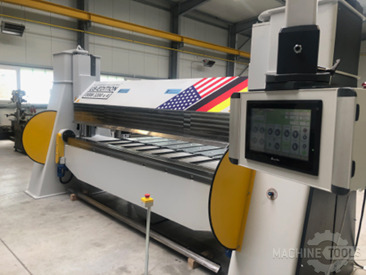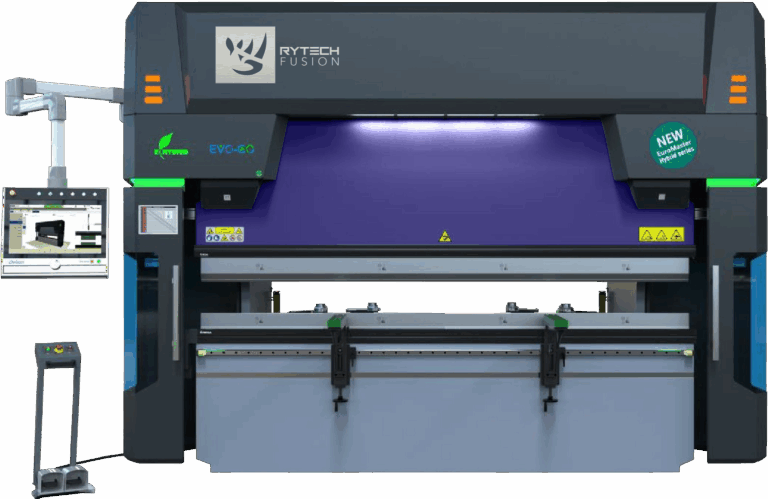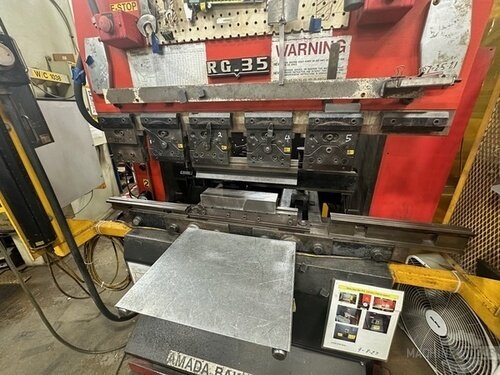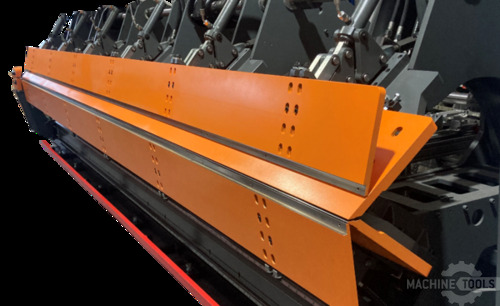From my earliest days working with family-run sheet metal shops near southern Chicago, I’ve seen firsthand how the right equipment can transform a business. My journey to Mac-Tech has taken me across the Midwest, working side-by-side with fabricators, roofers, and manufacturers who need more than just machinery—they need solutions tailored to their unique production challenges. At Mac-Tech, I’ve made it my mission to help customers cut through the noise, understand their options, and make investments that boost efficiency, quality, and profitability.
Leveraging Real-World Experience: Optimizing Coil-Fed Production for Maximum Efficiency
One of the first questions I ask when walking a shop floor is, “Where’s your bottleneck?” For coil-fed operations, maximizing efficiency comes down to more than just the speed of your folder or panel bender. It’s about how seamlessly your decoiler, slitter, and feeding systems integrate with downstream forming equipment. I’ve helped customers reconfigure entire lines—sometimes by adding a smart coil processor, other times by upgrading a folder to keep pace with automated slitting. The result is always the same: less handling, fewer errors, and a production flow that keeps labor costs under control.
Automation has been a game-changer. Servo-driven folders and panel benders can now adjust to different profiles on the fly, reducing setup times and allowing operators to focus on quality control rather than manual adjustments. This not only tightens tolerances but also opens the door to lights-out production—a real boost for shops facing skilled labor shortages.
Evaluating Your Fabrication Needs: Slitting, Forming, and Folding Considerations
Every shop is different, but the fundamentals remain: you need equipment that matches your product mix and order volume. When evaluating whether to invest in a long folder or a panel bender, I work with customers to map out their most common parts, material types, and anticipated growth. For some, a high-speed slitter paired with a robust folder is the best way to produce custom-length roofing panels with minimal waste. Others benefit from the repeatability and automation of a panel bender, especially when dealing with large batches of complex, multi-bend parts.
Don’t overlook integration. I’ve seen too many operations underutilize a high-end folder because their slitter or decoiler couldn’t keep up. That’s why I always recommend a full-line review, ensuring each machine—from the coil line through the forming and folding stages—works in harmony.
Long Folders vs. Panel Benders: Performance Insights from Customer Success Stories
Let’s look at some real-world outcomes. One of our roofing clients in Wisconsin was running two manual folders and struggling to keep up with seasonal demand. By upgrading to a servo-driven long folder with CNC controls, they cut setup times by 60% and doubled their daily output, all while reducing scrap. Another customer in architectural fabrication switched from traditional folders to a panel bender, enabling them to handle intricate profiles with consistent accuracy. The automation allowed them to redeploy skilled operators to value-added tasks, further boosting throughput.
While long folders excel at handling long, straight bends and are ideal for roofing, gutters, and siding, panel benders shine when complex geometries and multiple sequential bends are required. Both offer automation options, but panel benders typically deliver tighter tolerances and faster cycle times for shorter, high-mix parts.
DR. HOCHSTRATE 3200*6
Upgrading Equipment: Pat’s Proven Strategies for Reducing Waste and Boosting Throughput
When is the right time to upgrade? My rule of thumb: if you’re running overtime just to keep up, or if scrap rates start creeping higher, it’s time for a serious look at your equipment. I advise customers to track downtime, maintenance costs, and material yield. Sometimes the solution is a simple retrofit—adding CNC backgauges or automation to an existing folder. Other times, the best ROI comes from replacing aging machines with new, servo-driven models that support advanced features like automatic tool changes or integrated slitting.
I also emphasize the value of training. Even the best machine can underperform if operators aren’t comfortable with the controls or software. That’s why I include on-site support and follow-up visits with every installation, making sure my customers get the most from their investment.
Choosing the Right Solution: Speed, Flexibility, and Future-Proofing Your Operation
There’s no one-size-fits-all answer. If your business is built around long, standard panels, a long folder with automation is likely your best bet—fast, flexible, and easy to program for a variety of lengths. If you’re handling a wider mix of part profiles, or if architectural details are a growing part of your business, a panel bender may offer the flexibility and repeatability you need to stay competitive.
Future-proofing is key. I always recommend choosing equipment that can grow with your operation—think modular automation, software upgrades, and serviceability. The right choice will not only solve today’s challenges but also position your shop for tomorrow’s opportunities.
Frequently Asked Questions
When is the right time to upgrade a roll former or folder?
If you’re seeing frequent breakdowns, rising maintenance costs, or you can’t keep up with orders even after adding shifts, it’s time to look at an upgrade. Modern equipment pays for itself quickly through reduced downtime and increased throughput.
How do servo-driven folders compare to hydraulic systems?
Servo-driven folders offer faster cycle times, quieter operation, and more precise positioning. They also require less maintenance and make it easier to automate repeat jobs, which is a major advantage for high-mix production environments.
What’s the difference between a combi-beam and double folder?
A combi-beam folder allows you to switch between different tool sets—like straight and radius tools—on the fly, increasing flexibility. Double folders can bend both up and down without flipping the part, which speeds up complex jobs and reduces handling.
What are signs a roll forming line is no longer cost-effective?
Look for increased scrap, excessive manual adjustments, and long setup times. If your line can’t keep up with your order volume or you’re losing jobs due to quality issues, it’s time to consider an upgrade.
Can automation really reduce labor needs in a small shop?
Absolutely. Even modest automation—like CNC backgauges or auto-feeders—can allow one operator to do the work of two or three, freeing up your team for higher-value tasks.
How do I know if a panel bender is right for my shop?
If you’re producing a high volume of short, complex parts or need to run frequent changeovers, a panel bender’s automation and repeatability can deliver significant productivity gains.
Ready to see how the right equipment can transform your production? Whether you’re considering a new folder, panel bender, or a complete line upgrade, I’m here to help. Let’s set up a walkthrough, demo, or quote tailored to your needs—just reach out and let’s get started.
Get Weekly Mac-Tech News & Updates








